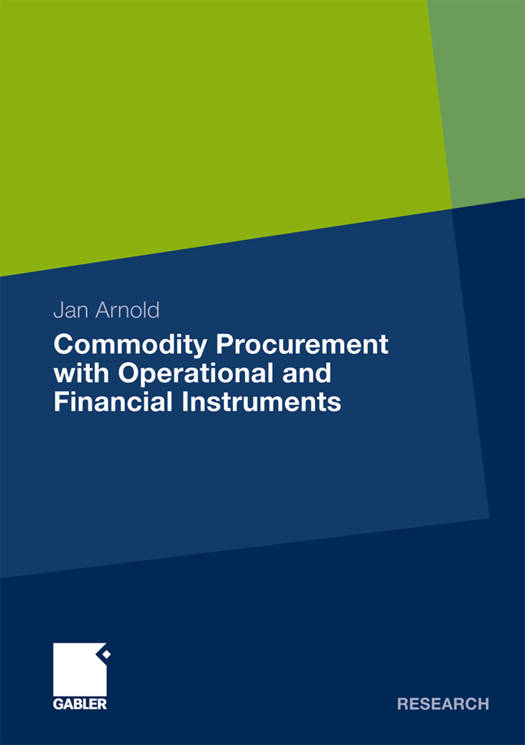
- Afhalen na 1 uur in een winkel met voorraad
- Gratis thuislevering in België vanaf € 30
- Ruim aanbod met 7 miljoen producten
- Afhalen na 1 uur in een winkel met voorraad
- Gratis thuislevering in België vanaf € 30
- Ruim aanbod met 7 miljoen producten
Zoeken
€ 83,95
+ 167 punten
Omschrijving
1. 1Motivation Increasingglobalcompetitionandcostpressureforceenterprisesandsupplychains to discover undetected cost-saving potentials. In particular, interfaces to the p- curement market are a promising ?eld for improvement. Recent developments in international trade outline the high in?uence of uncertain deliveries and highly volatile prices on the companies' costs. A vital question in research, industry, and politics addresses theoptimal procurement policy of rawmaterialsdue touncertain future prices and is of highest priority for the ?rms' success and even the wealth of a nation. Nowadays, commodity markets and commodity derivative markets offer transparent, fast, and ef?cient trade and risk sharing for raw materials and ?nancial products on raw material prices, e. g. , option contracts. This coexistence of op- ational and ?nancial procurement instruments, i. e. , buying opportunities on spot and derivative markets, offers an auspicious chance to optimize the procurement policy in the crucial problem of raw material procurement which is the focus of this thesis. The most basic distinction of commodities is between storable and non-storable commodities (see Pirrong (2008)). The vast majority of commodities is storable, mainly at some costs, but this class is fairly heterogeneous. Commodities can be characterized by seasonality in demand (such as crude oil or natural gas) or production (take wheat or sugar as example) or contrarily by a rather continuous production and consumption (e. g. , nickel and aluminum).
Specificaties
Betrokkenen
- Auteur(s):
- Uitgeverij:
Inhoud
- Aantal bladzijden:
- 152
- Taal:
- Engels
- Reeks:
Eigenschappen
- Productcode (EAN):
- 9783834922557
- Verschijningsdatum:
- 27/04/2010
- Uitvoering:
- Paperback
- Formaat:
- Trade paperback (VS)
- Afmetingen:
- 148 mm x 210 mm
- Gewicht:
- 208 g

Alleen bij Standaard Boekhandel
+ 167 punten op je klantenkaart van Standaard Boekhandel
Beoordelingen
We publiceren alleen reviews die voldoen aan de voorwaarden voor reviews. Bekijk onze voorwaarden voor reviews.








